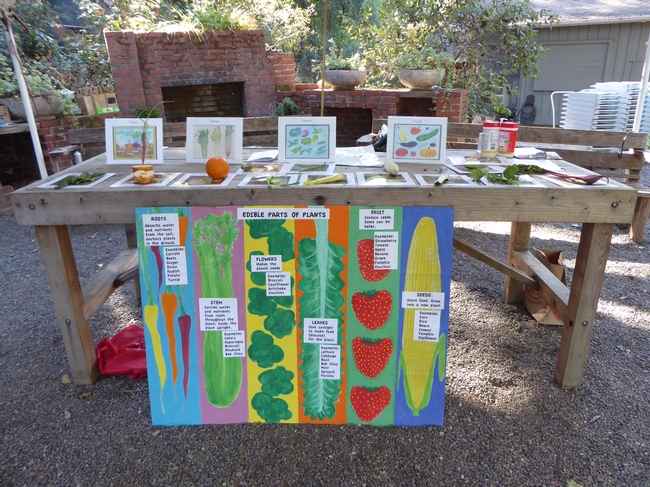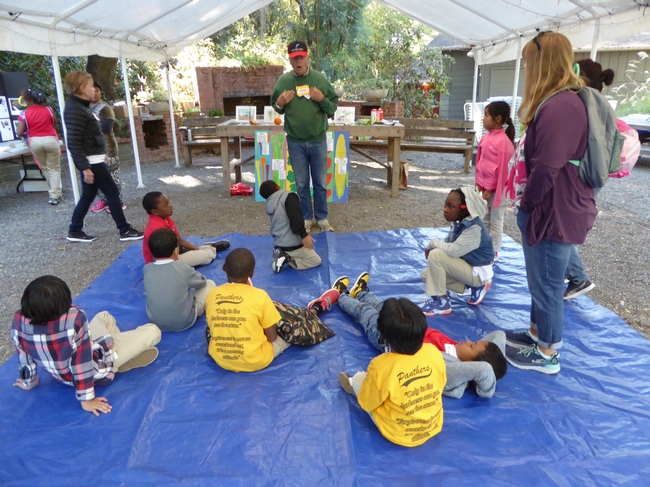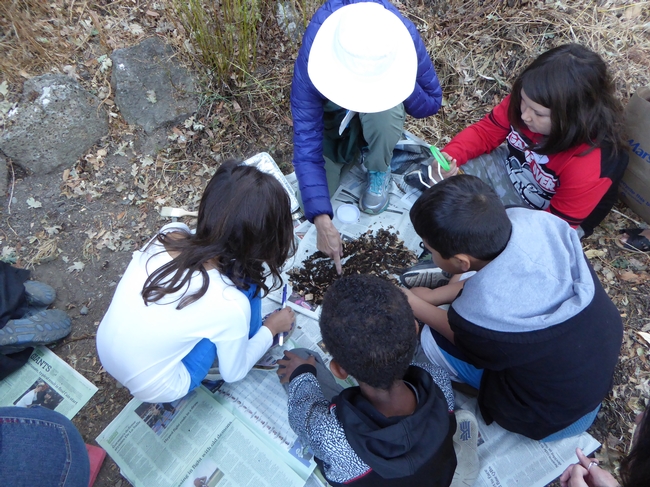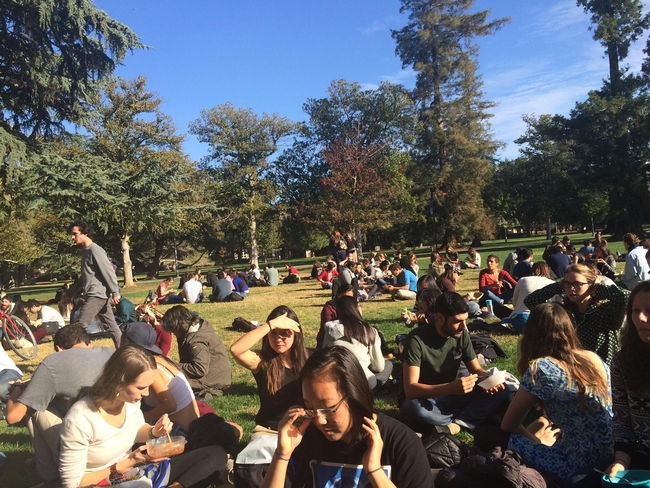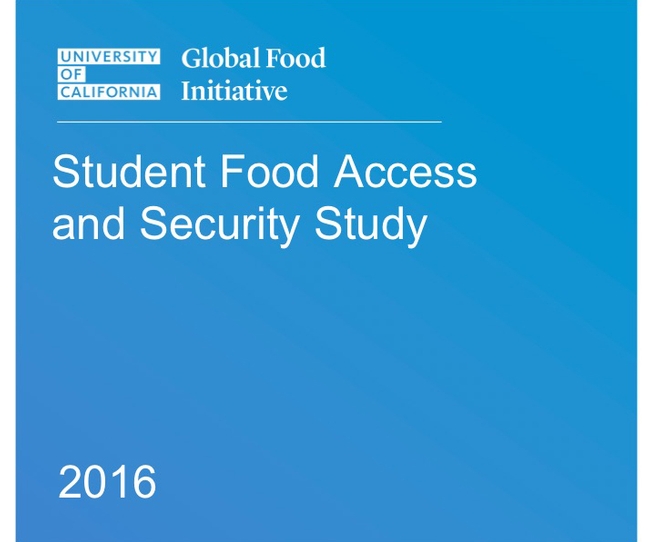Posts Tagged: nutrition
Study finds schools across the nation have too much lead in drinking water
Despite increasing awareness of the issue of lead in drinking water, UC Nutrition Policy Institute and Harvard School of Public Health researchers found that many students in the U.S. attend public schools in states where not all taps are tested for lead, according to reports in various media outlets including The Guardian, NBC News and The Nation.
“All kids, no matter where they live, should have access to safe drinking water in school,” said Angie Cradock of Harvard's Prevention Research Center on Nutrition and Physical Activity, who led the study team. “Drinking water is important for helping kids grow up healthy, and water should be safe to drink.”
The researchers found that there is no uniformity in states' approaches to create and oversee programs to test for elevated lead in school drinking water. When collected, data are not regularly made available to guide action to reduce potential exposure to lead. About half of the country's students are at public schools in states that don't have programs or requirements to test drinking water in those schools.
Of the 24 states (plus Washington, D.C.) with a statewide program to test school drinking water for lead, only 12 states had data that could be analyzed by the research team. In these 12 states, 44 percent of all schools had at least one tap that tested higher than their state's threshold for action, and 12 percent of all samples had a lead concentration higher than the state's action level. The report also describes the features of statewide initiatives in operation between Jan. 1, 2016, and Feb. 28, 2018, in 24 states and the District of Columbia to conduct testing for lead in school drinking water.
The report was funded by Healthy Eating Research, a national program of the Robert Wood Johnson Foundation.
For more information, see the Harvard T. H. Chan School of Public Health website.
Dig it, Grow it, Eat it: School gardens support learning and healthier food choices
The success of a garden is normally identified by plentiful crops of tomatoes and squash or the beautiful display of vibrant thriving flowers, shrubs or trees. However, a school garden's true success is dependent on the rich experiences and education students receive.
Taking the classroom into the garden
School gardens can play a big part in supporting a child's education outside of the traditional classroom environment; offering hands-on learning experiences in a variety of core curricula. Social sciences, language arts, nutrition and math are just a few of the many subjects that can be easily integrated into the school garden curriculum.
When paired with nutrition education, school gardens can transform food attitudes and habits.
“Gardens containing fruits and vegetables can change attitudes about particular foods; there is a direct link between growing and eating more fruits and vegetables,” said Missy Gable, statewide director for the UC Master Gardener Program. “Programs statewide connect people to local community gardens, or provide school administrators and staff the information needed to get started with their own school, community or home garden.”
“Dig it, Grow it, Eat it”
The UC Master Gardener Program of Marin County hosts an award-winning school gardening program that emphasizes engaging students with the many learning opportunities in nature. The program is a portable field trip for school-age youth called “Dig it, Grow it, Eat it.”
“Dig it, Grow it, Eat it” starts with University-trained UC Master Gardener volunteers training school educators. Once trained, educators use the curriculum to teach students how to grow edible plants from seed to harvest. UC Master Gardener volunteers help deliver the curriculum and provide additional resources. Students learn how plants grow, and receive nutrition lessons to give them a better understanding of the human body's need for healthy food.
The half-day workshop rotates groups of students through six stations providing them with garden enhanced nutrition education, linking health with growing and harvesting foods they like to eat and are good for them. These include:
- Edible Plant Parts
- How Plants Grow
- Plant Seed Science
- Propagation
- Soil Science
The “Dig it, Grow it, Eat it” curriculum is centered on the theme “We love the earth because we care for it. We care for the earth because we love it.” For many children, getting their hands dirty in the garden and discovering the science of growing their own food brings a sense of joy and pride they can carry with them for years to come.
Connect with us
The UC Master Gardener Program extends to the public free UC research-based information about home horticulture and pest management. In exchange for the training and materials received from the University of California, UC Master Gardeners perform volunteer services in a myriad of venues. If you are interested in becoming a certified UC Master Gardener contact your local UC Cooperative Extension office or visit mg.ucanr.edu.
Popular Japanese tea matcha has health benefits
Matcha, finely ground powder made from baby green-tea leaves, is growing in popularity due to health benefits and the natural woodsy flavor it imparts to drinks, pastries and savory dishes, reported Jenice Tupolo and Carla Meyer in the Sacramento Bee.
To find out if the most-prized tea in Japan lives up to its purported health benefits when scrutinized scientifically, the reporters contacted UC Cooperative Extension specialist Sheri Zidenberg-Cherr.
“The health benefits are similar to that of green tea in general,” Zidenberg-Cherr said. Possible benefits of green tea include lower risk of cardiovascular disease and some types of cancers, and bone-density improvement. Though "the studies are pretty inconclusive," she said, some have been promising.
"Some have shown a benefit of maybe three cups a day in terms of reduced risk of cardiovascular disease especially," she said.
Zidenberg-Cherr cautioned against taking matcha or green tea with dairy milk.
UC students in 'protected environment' are vulnerable to food insecurity
Many people are surprised to learn that students enrolled in the state's premiere higher-education system are vulnerable to food insecurity, said Suzanna Martinez, a researcher with UC ANR's Nutrition Policy Institute, on the KPFA radio program Up Front. (Martinez's segment begins at the 20:23 mark.)
Martinez was interviewed for the program by host Pat Brooks, who was sitting in for Dennis Bernstein. Martinez said that anecdotal evidence of food insecurity on UC campuses was already popping up when UC President Janet Napolitano provided funding to each of the campuses to address the issue. The UC president also provided funding to the UC Nutrition Policy Institute to survey students across the system to document and understand food insecurity on UC campuses.
The report, issued last week, was based on the responses to a survey by about 9,000 students. Nineteen percent indicated they had “very low” food security and an additional 23 percent were characterized as having “low” food security. The greatest impact, Martinez said, was on the Latino and black student populations. Most of the students struggling with food insecurity had never experienced such circumstances before going away to college.
In response to the survey, Napolitano approved $3.3 million in new funding over the next two years to help students regularly access nutritious food on campus and off.
Brooks asked Martinez what is the new report's 'call to action.'
"Our hope is to eliminate food insecurity, and with this report we are hoping that others will be dedicated to this and committed to the work as well,” Martinez said.
UC commits $3.3 million to improve student access to nutritious food
Guided by the findings of a survey conducted by UC ANR's Nutrition Policy Institute, UC President Janet Napolitano announced July 11 she would commit $3.3 million in new funding over the next two years to help UC students regularly access nutritious food. UC's survey findings and response were reported by the San Francisco Chronicle, East Bay Times, Los Angeles Times, KCBS and KPCC.
The online survey was administered to a randomly selected sample of students from all 10 UC campuses in spring 2015. It is part of the UC Global Food Initiative, which promotes a nutritious, sustainable food supply.
According to the NPI survey, 19 percent of the nearly 9,000 participating UC students indicated they had “very low” food security, which the USDA defines as experiencing reduced food intake at times due to limited resources. An additional 23 percent were characterized as having “low” food security, defined by the USDA as reduced quality, variety or desirability of diet, with little or no indication of reduced food intake.
“I wasn't expecting that level of food insecurity in students,” said NPI director Lorrene Ritchie, who led the study, to Jessie Qian of the Daily Californian. “Adults who aren't informed would think students are just passive, spending their money on other things or just complaining … but it's really that big of a problem.”
According to the UC news release, UC has developed an action plan tailored to the needs of individual campuses while maximizing coordination among them. The plan includes:
- Expanding food pantry storage and access
- Increasing collaboration with state and county offices to register students for CalFresh, California's nutrition assistance program
- Establishing and expanding awareness campaigns on student support services and food access
- Expanding the existing Swipe Out Hunger programs, which allow university students to donate excess dollars on their meal plan to reduce hunger on campuses
- Integrating food preparation and secure storage space into new student housing design and construction
- Enhancing financial aid communications about housing and food costs
“Among students who reported food insecurity in the past year, we found that for 57 percent this was a new experience – not one they had faced as children,” says Ritchie. “This suggests that students who are on their own for the first time would benefit from financial literacy training and additional information about financial aid, nutrition assistance, and making healthy choices on a limited budget.”
The report Student Food Access and Security Study, authored by NPI research analyst Suzanna Martinez, UC Santa Barbara sustainability coordinator Katie Maynard and Ritchie, can be downloaded at http://npi.ucanr.edu.



